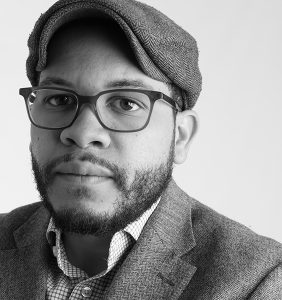Leslie Smith III is a contemporary abstract artist and associate professor of art in the UW’s School of Education. His work, which is primarily oil paint on shaped canvasses, is displayed both nationally and internationally, and is currently on display at the Galerie Isabelle Gounod in Paris. “I think if you’ve never had the opportunity to view art and be critical of it,” Smith says, “it’s an experience worth having because I think when you’ve had that experience, it’s a lot easier to maybe understand some other seemingly unrelated issue or concern that you might have with the world, or with yourself. You identify something, an object, an image, that brings you intrigue or some type of visual pleasure, and then you try to better understand it, and in doing so, you find out more about yourself.” He adds, “The reason why it’s important to view and see art is to better understand not only the world that you live in and that you traverse, but just be aware of how other people are seeing the same things and experiencing the same things that you are, but are finding other ways of expressing it.”
Here, Smith offers a guide to engaging with art for everyone — regardless of experience or interest:
- Arrive without expectations.
“I find that people, when they go to museums or galleries, they have an expectation on how they’re going to be perceived, how to act, how to dress. Just be yourself. I feel like if you can get over the hurdle of entering into a new space, a space that’s not typical of your everyday space of work, the grocery, the gas station, whatever, and you go in with pure curiosity, you’ll be fine.” - Don’t be afraid to form your own opinions.
“Not everything is art, and not everything is good. Just because someone else really loves it or writes that it’s really great, doesn’t mean that you have to feel that way, too. After [art] leaves a studio, it’s really up to you as the viewer to take it and do with it what you want. But give it time.” - Know that not all artwork has to mean something.
“Not all artwork has to be something that you can quantify as an idea to ‘get.’ Sometimes work, especially contemporary work, is to create, in that experience [and] in that moment, a challenging inquiry. The work isn’t directly about an event, a moment in time, or a place or a person; it’s about an experience that that artist wants to share with you, so part of understanding that work is to allow yourself to experience it. There might be a series of events in that sculpture or that installation that makes you feel a certain way. That could be very well intentional. Allow yourself to be open to the experience of questioning why things are the way they are.”

